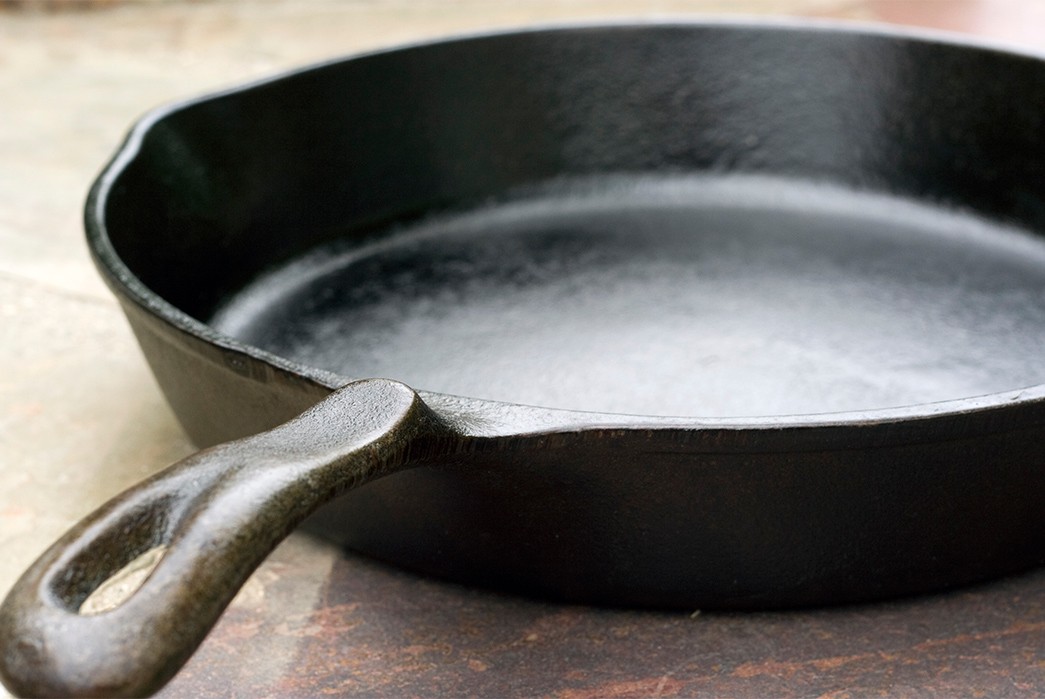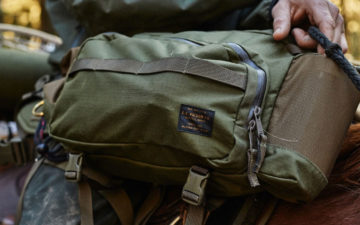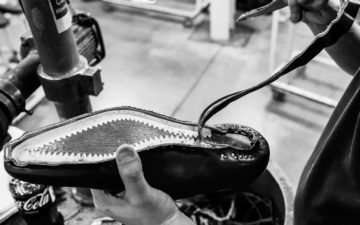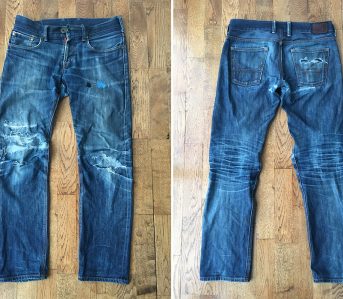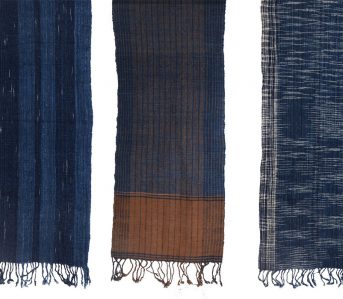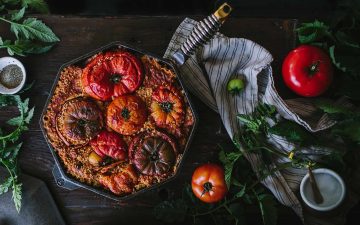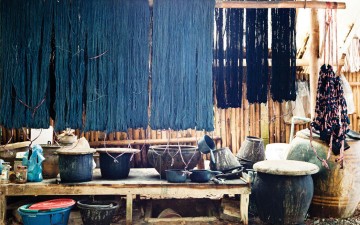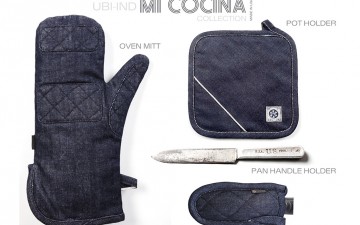As time has gone on, products across all markets have become more and more disposable. Whether it’s changing trends or advances in technology, products either die out, or they’re ‘upgraded’ with a newer, shinier replacement.
But here at Heddels, we like to appreciate things that not only stand the test of time, but improve and become more beautiful as they grow older. And when it comes to kitchenware, the Cast Iron Skillet is a prime example of how you can make an investment that has those aforementioned qualities.
Built to last more than a lifetime, cast iron cookware has been around for over two thousand years, and is still used in domestic and professional kitchens worldwide. So today, we’re shining the spotlight on the cast iron skillet—and all that comes with it—to give you a non-stick understanding of what all the fuss is about.
What Is Cast Iron Cookware?
As the name would suggest, the cast iron cookware umbrella covers pots, pans, and skillets, made from iron that’s been cast in a mold. Cast iron pieces are the among most traditional forms of cookware. Before the invention of the stove top all those years ago, cast iron pots and cauldrons were widely used as they could withstand and retain the intense direct heat from a hearth or fireplace.
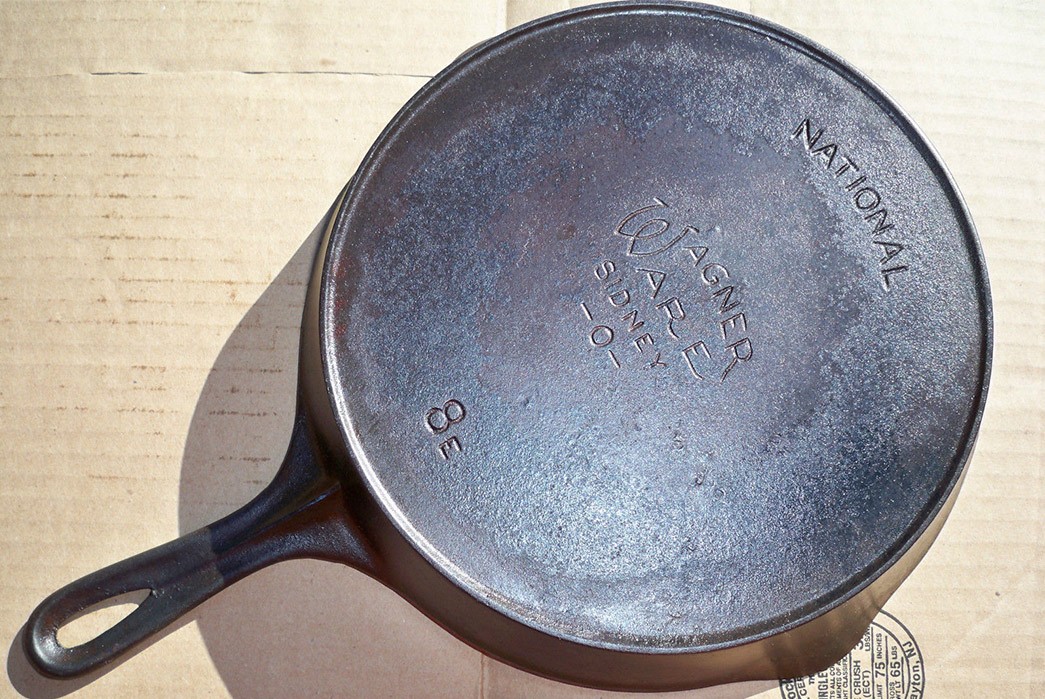
They are often black in appearance, mostly made of highly textured iron, but some cast iron cookware has a colored enamel coating. Because they’re made from one single molded piece of iron, they’re virtually indestructible, and—with proper care—they’ll only get better with time, as they’re ‘seasoned’ with oils every use, which creates an incredibly efficient ‘non-stick’ cooking surface (we’ll get to that later).
How is Cast Iron Cookware Made?
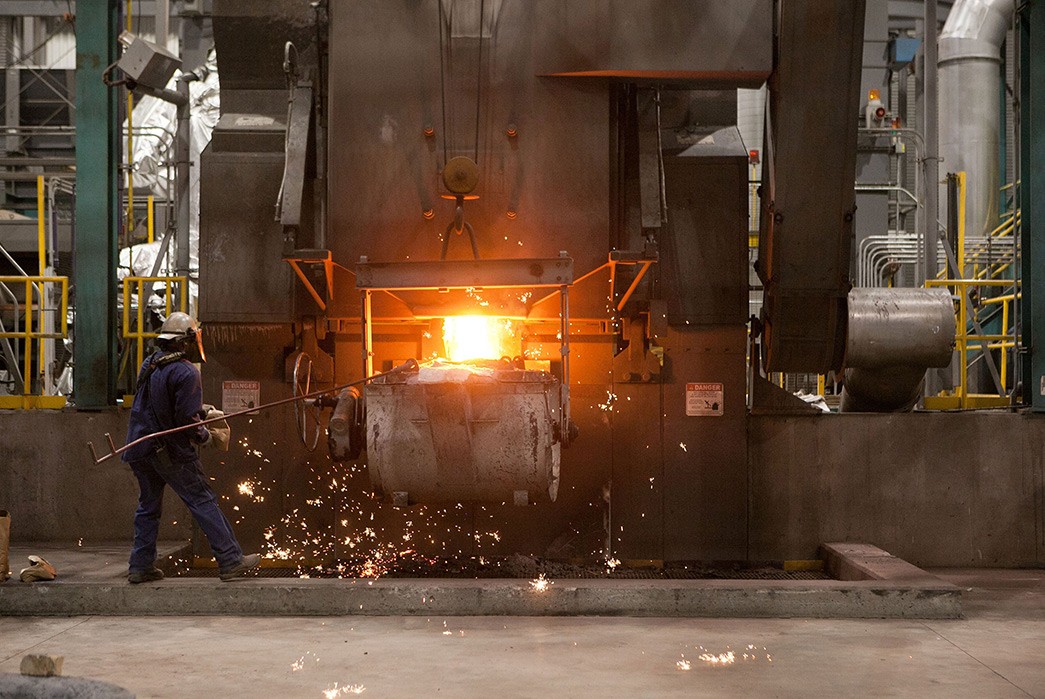
Strip furnace at Lodge, in Tennessee. Image via The Kitchn.
Today, cast iron cookware is made by melting iron ore in a furnace, and pouring it into molds. Once removed from the mold, each piece is blasted to remove excess residue from the mold, and then it’s polished, rinsed, and hung to dry. They’re often then coated with a preliminary layer of seasoning, usually a soy-based oil.
There are also ranges of enamel-coated cast iron cookware, in which the skillet or pan is coated with a thin layer of enamel. This process makes the vessel much easier to clean, resistant to rust, and leaves no need for seasoning, as the enamel itself is non-stick. The enamel can chip, however, and some argue that the non-stick qualities of enamel coated skillets reduce over time.
Why is There a Cult Surrounding Cast Iron?
Cast iron cookware was a huge success during the first half of the twentieth century, but its popularity began to wane due to the introduction of Teflon-coated, non-stick aluminum cookware in the ’60s and ’70s. Those products, among other non-stick variants, still reign supreme in today’s market, but just like leather or raw denim markets, there are still purists and enthusiasts who are all about their cast iron. Some even collect cast iron skillets and other pieces of vintage cookware, with vintage pieces from the more famous heritage brands such as Griswold or Wagner Ware fetching prices up to $1,000.
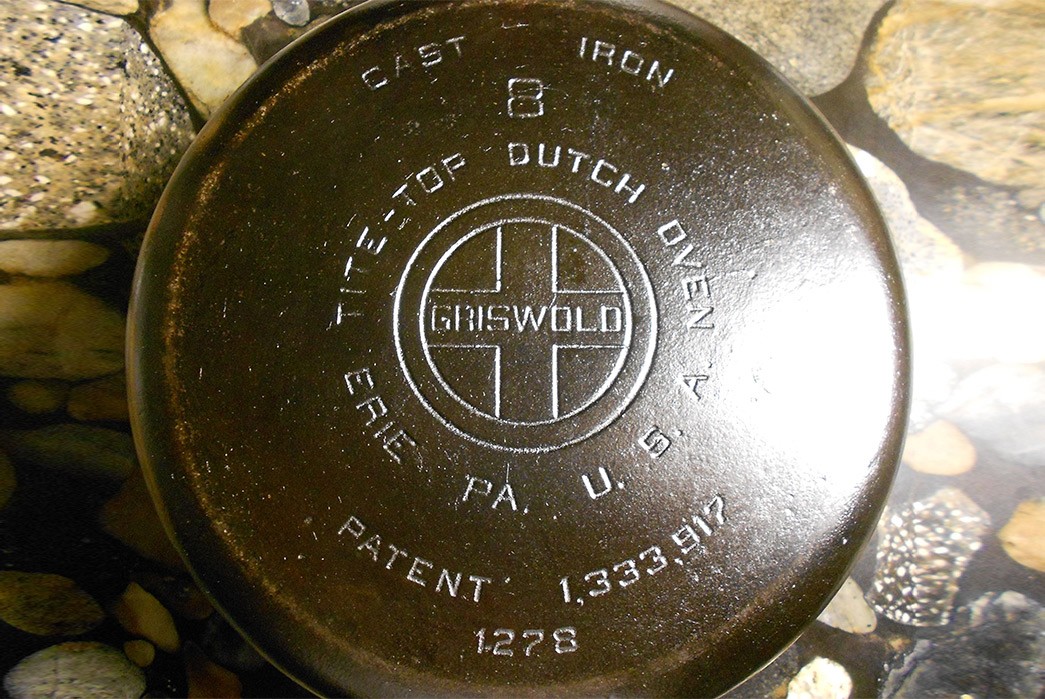
This is because, like many other heritage products, cast iron skillets have form, function, and longevity. If used and maintained correctly, skillets made from bare cast iron become more unique with each cooking session, and people who religiously use cast iron cookware all have their own ways of seasoning and caring for their skillets.
The Pros & Cons of Cast Iron
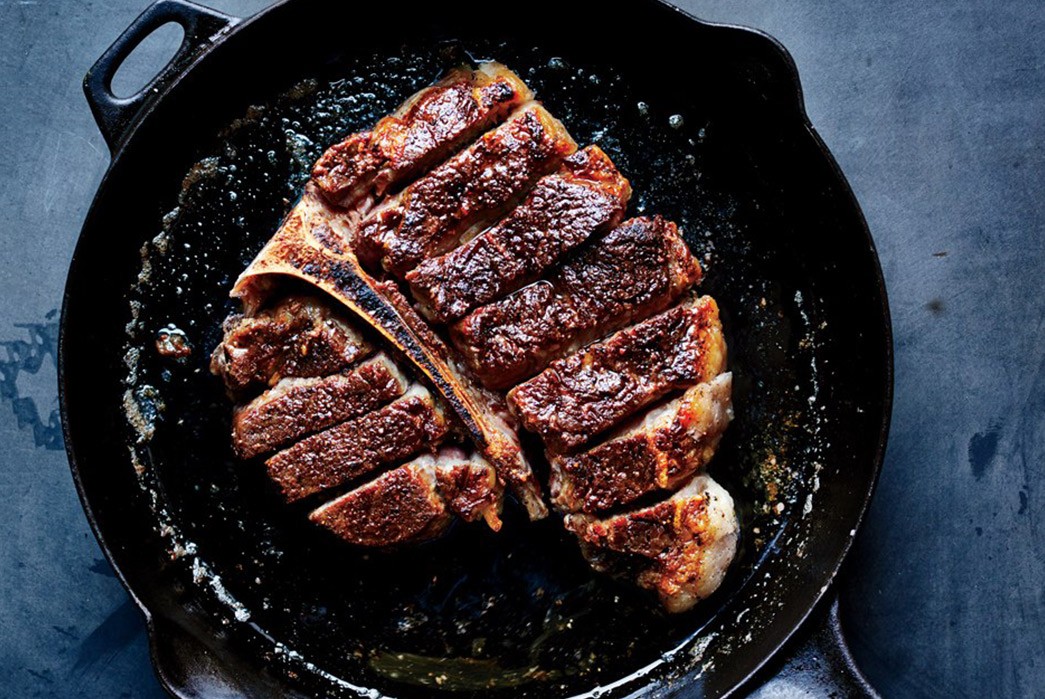
Pros
Cast iron skillets are versatile beasts. You can use them to cook pretty much anything, and cook that anything pretty much any way — whether it’s by frying, searing, or even transferring it into the oven to bake something off. And once thoroughly heated, cast iron skillets retain heat at a remarkable rate. This makes them perfect for either slow or fast cooking.
Depending on what you cook and how you cook it, a bare cast iron skillet will become seasoned, picking up a slick layer of non-stick coating of polymerized oils and fats, which will improve the efficiency and non-stick qualities of the pan. To many, this is one of the most attractive qualities of the cast iron skillet.
Lastly, they’re affordable and economical—you can pick up a high quality cast iron skillet for $20 from somewhere like Wal-Mart, and it could last you forever. This means less pan-purchasing for you and less old pans in a landfill. Winning all around!
Cons
Cast Iron purists will say that caring for a cast iron skillet is a piece of cake, but to the average pan-handler, it’s more hassle than a run-of-the-mill Teflon option. Unless you go for an enamel-coated skillet, there are specific processes to be used when cleaning or re-seasoning a cast iron pan, so you may be subject to some trial and error.
Also, no matter how many times you’ve made eggs over-easy, there is a knack to cooking in a cast iron skillet. Heating them up evenly and maintaining a stable temperature to cook your food can have a bit of a learning curve, but that’s also part of the fun!
Using and Caring for Cast Iron
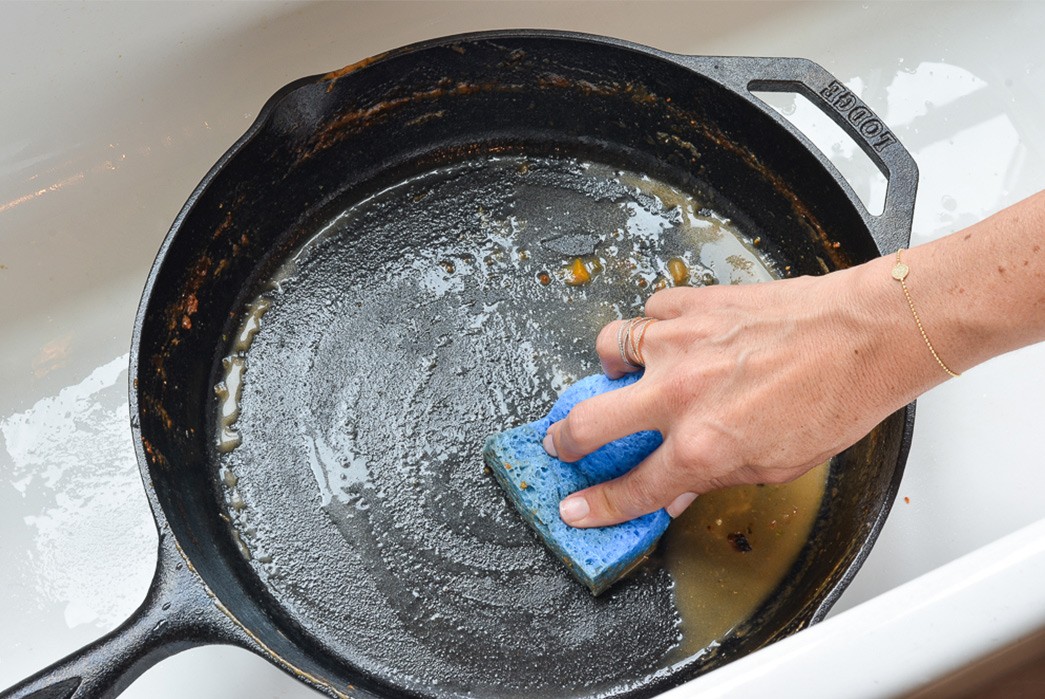
Image via Once Upon A Chef.
There are many myths and divided opinions on how best to maintain a cast iron skillet, and the topic seems to always be up for discussion. The most common point of contention is the use of soap. Some people advise you avoid soap completely, and simply rinse out your pan after cooking, and dry well, while others say hot soapy water is okay. One thing is for certain though: rough scouring and scrubbing are an absolute no-go, as they can ruin the seasoning and cause damage to enamel coated skillets.
Thoroughly drying your skillet is also highly recommended by most, as simply air drying can lead to rust. You can do this by rubbing it down with a dry cloth, and setting it on the stove on a low heat for a short period to evaporate excess moisture.
The seasoning of bare cast iron skillets is also essential to the upkeep of its non-stick qualities. Again, the frequency of re-seasoning is up for discussion, but in reality, it all boils down to how often you use the skillet, what you’re cooking, and how you’re washing it.
Regardless, the common method of manually seasoning a cast iron skillet involves coating the whole thing in a neutral oil, and baking it in an extremely hot oven for around 30 minutes, placing a pan underneath it to catch any excess oil. Some repeat this process up to four times when re-seasoning a pan.
Our basic recommendation for how to clean your cast iron pan is as follows:
- Remove the large pieces of food from the pan and let it cool
- Rinse out the pan with cold water
- Scrub with Kosher salt or a chain mail scour designed for cast iron
- Place on a low burner to evaporate any remaining water
- Apply a thin layer of vegetable-based oil to the cooking surface with a paper towel
- Heat pan until oil begins to smoke and remove from heat
- Let pan cool and store
Where to Buy Cast Iron Cookware
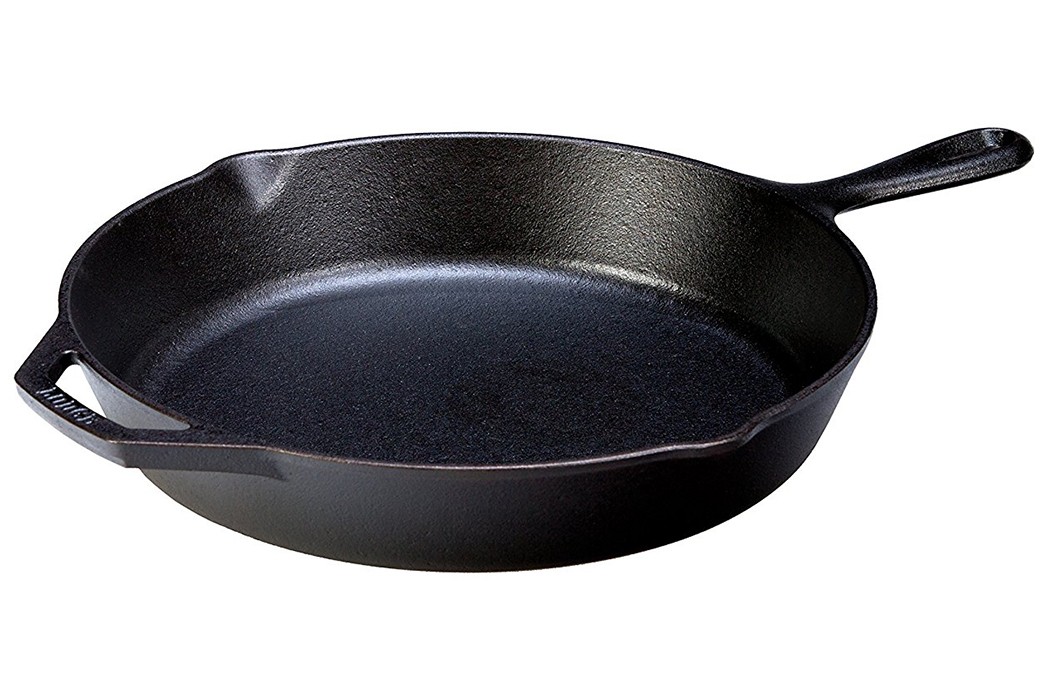
You can find cast iron cookware at pretty much any decent store that sells kitchenware. There are plenty of options out there – ranging from $20 – $300 – all with their own qualities, and you can check out our Five-Plus-One buyers’ guide for six solid options from across all price ranges.
Our pick at entry level is the 12″ Lodge Cast Iron Skillet. Coming in at around $25, you would be hard-pressed to find a skillet of this quality at such a reasonable price point. Lodge is a family owned company that has been making cast iron cookware in the U.S.A. since 1896, and this pre-seasoned skillet with a generous cooking surface and helper handle, is the perfect option for anyone starting out with cast iron cookware.
Other notable makers of cast iron cookware include:
- Le Creuset
- Staub
- Finex
- Zelancio
So get cookin’!

